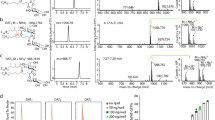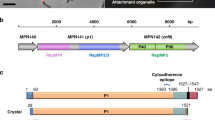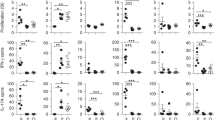Abstract
IMMUNOCHEMICAL studies carried out by D'Alessandro et al. 1 on a non-pathogenic, culturable treponeme, the so-called Reiter treponeme, revealed the presence of four antigenic components: (1) a thermolabile protein; (2) a specific, thermostable antigen with polysaccharide characteristics; (3) a lipoid, corresponding to the ubiquitous lipidic antigen cardiolipin; (4) another lipoid similar to the organ-specific cerebral antigen of Witebsky2. These studies led to the conclusion that the treponemes, like other organisms, are mosaics of antigens, and a safe basis was established for a better understanding of the complex serological response of the infected host.
This is a preview of subscription content, access via your institution
Access options
Subscribe to this journal
Receive 51 print issues and online access
$199.00 per year
only $3.90 per issue
Buy this article
- Purchase on Springer Link
- Instant access to full article PDF
Prices may be subject to local taxes which are calculated during checkout
Similar content being viewed by others
References
D'Alessandro, G., Oddo, F. G., Comes, R., and Dardanoni, L., Riv. Ist. Sierot. Ital., 24, 134 (1949).
Witebsky, E., Münch. med. Wochenschr., 1914 (1927).
Dardanoni, L., and Censuales, S., Riv. Ist. Sierot. Ital., 32, 483 (1957).
Portnoy, J., and Magnuson, H., J. Immunol., 75, 348 (1955).
Author information
Authors and Affiliations
Rights and permissions
About this article
Cite this article
D'ALESSANDRO, G., DEL CARPIO, C. A Lipopolysaccharide Antigen of the Treponema . Nature 181, 991–992 (1958). https://doi.org/10.1038/181991b0
Issue Date:
DOI: https://doi.org/10.1038/181991b0
This article is cited by
-
“Endotoxicity” of the lyme disease spirochete
Infection (1983)
-
Fluorescenzserologischer Nachweis eines in Syphilitikerseren vorkommenden Antik�rpers gegen ein hitzestabiles Antigen der Reiter-Treponemen
Archiv f�r Klinische und Experimentelle Dermatologie (1967)
-
Fluorescenzserologische Untersuchungen zur Morphologie von Reitertreponemen
Zeitschrift für Medizinische Mikrobiologie und Immunologie (1967)
Comments
By submitting a comment you agree to abide by our Terms and Community Guidelines. If you find something abusive or that does not comply with our terms or guidelines please flag it as inappropriate.



